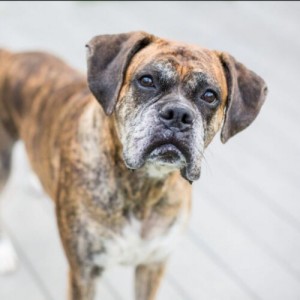How to Optimize Your Home For A Service Dog
Service dogs lead their owners into more functional and fulfilling lives. These loving, highly trained animals bear a lot of responsibility as they help perform a variety of day-to-day tasks for people with disabilities.
Most people know about guide dogs, but did you know that service dogs can also watch for signs of seizures, listen for sounds that people with hearing impairments may miss, or help open doors and carry objects for their handlers?
Service dogs are valued working partners and companions to over 500,000 Americans. Welcoming a new service dog is an exciting opportunity for you and your family.
It’s important to optimize your home for your service dog’s comfort, ease, and security. In this article, we’ll explore how to do that along with how to connect with organizations that provide service dogs and considerations for training your own service dog.
What is a Service Dog?
In addition to being great companions, working dogs perform a variety of jobs. They may aid in search-and-rescue operations, sniff out illegal substances, detect cancer, or provide therapy for people living in institutional settings.
Not every working dog is a service dog, though. The Americans with Disabilities Act specifically defines a service dog as one individually trained to do work or perform tasks for people with disabilities.
These disabilities may be physical, intellectual, psychiatric, or sensory. To qualify for a service dog, you typically need to work with an organization that serves people who live with your specific disability.
Common Service Dogs
The kind of disability you have partly determines which breed of dog you’ll get. The tiny Pomeranian, for example, lacks the physical strength to pull a wheelchair, but it has sharp hearing, a keen sense of smell, and enough dexterity to open cupboards and doors.
Labradors, Golden Retrievers, German Shepherds, and Great Danes may be employed for jobs that require physical strength and agility. Poodles are often used for tasks that require keen vision and problem-solving skills. A Pomeranian can work in tight, confined spaces due to its small size. Whatever the breed, a service dog must have qualities like intelligence, friendliness, a calm demeanor, and a love for work.
It takes about 18 months and can cost anywhere from $10,000 to $20,000 to train just one service dog. More than half of service dog candidates do not complete their training. Fortunately, these dogs can find homes as companions for loving families, while service dogs who complete their training programs go on to find work.
Optimizing Your Home for a Service Dog
When your new service dog arrives at your home, you’ll want it to feel welcome. That means optimizing your home and garden to make them accessible, navigable, and easy to work in.
Interior of the Home
Your dog needs clear, wide spaces that are simple to navigate and memorize. If you’ve had a disability for a long time, your home is probably already well-suited to your needs — and probably in good shape for your new dog, too. On the other hand, if your disability is recent, you may need to make some prompt modifications to your home.
Bathroom
The bathroom is probably the most hazardous room in your house. Every year about 235,000 people go to the emergency room because of an injury sustained in the bathroom. Small, slippery when wet, and filled with small objects in out-of-the-way cupboards, the bathroom can be tricky to manage.
Help your dog out by storing anything it needs to retrieve in a low storage container. If you use non-slip coverings on your floor, make sure they’re well-positioned to avoid either you or your dog getting tripped up.
Living Room
The clearer your floor is, the easier your dog will find it to navigate. Store remotes, magazines, throws, pillows, and other small items in baskets or bins that open from the top.
Keep personal belongings put away and debris picked up. In case of emergency, your dog will have a much easier time helping you get to safety.
You’ll also want to keep your living room well lit. If your dog will be turning lights on and off for you, be sure that switches are within easy reach of his nose or paw.
Bedroom
Most likely, your service dog will share your bedroom so it can respond to any nighttime emergencies. If your dog is a seizure detection specialist, it may need to sleep in the bed with you. If it will remain on the floor, however, make sure it has a designated sleeping spot.
You’ll also want to keep cords secured to the wall, slippers put in the closet, and pajamas picked up off the floor. Nothing should be scattered around that could distract the dog from its important job.
Kitchen
The kitchen is the primary workplace for many service dogs. Here, they may put away groceries, operate appliances, or alert their humans to alarms or smoke detectors. You’ll want to talk with your trainer about what your dog needs to do his specific jobs well.
For example, you might need to install tugs on the refrigerator doors or even remodel your kitchen so that countertops and cabinets are easy for your dog to access. Sometimes installing a lazy susan or pull-down shelf can be a great way to make your kitchen canine accessible without major renovations.
Doorways
Modern doorways are generally 32 inches wide or more to allow space for wheelchairs to get through. In an older home, however, you may be facing doors that are too small for you and your dog to pass through easily. Check with your dog’s trainer to see if your doors will be feasible for your animal to use. If not, you could have a remodeling project on your hands.
Some doorways are easy for an avid DIYer to enlarge on their own. If a door is part of a load-bearing wall, though, you need a licensed contractor to do the job.
Hallways
Narrow by nature, hallways can be a real challenge for your dog to navigate. Help your dog out by keeping them clean and clutter-free. You’ll also want to relocate furniture or decor that’s currently obscuring any part of the space.
Finally, keep this space well-lit. Maximize any natural light the space gets, and make sure overhead lights are clean and bright. If you haven’t already painted your hall a light color, now’s a good time to do that, too.
Exterior of the Home
Your dog will spend time outdoors. It’s important to keep your yard, sidewalk, and garage in good shape.
Garage and Driveway
If your dog will assist you in getting into and out of your car, it will need plenty of space to work. Trim any bushes or shrubs that extend into your driveway. You can also keep your space clear by moving other vehicles to another area outside your home. Most importantly, if your driveway is less than 12 feet wide, consider having it enlarged before your dog comes home.
Sidewalks and Pathways
Will your dog walk with you on the paths around your home or garden? If so, your sidewalk needs to be at least 36 inches wide if you use a wheelchair or 24 inches wide if you walk. Here again, you’ll want to trim any shrubs or other growth that may obscure the path or trip up your dog.
Yard
If your home has a yard, your dog needs a fence. A six-foot high barrier that discourages digging is enough for most dogs. You’ll want to check into the policies governing what kind of fence you can have in your area, and consult with the service dog trainer about the right kind of fencing for your dog based of its breed and build.
General Accessibility Tips and Emergencies for Service Dogs
As you plan to welcome your service dog, look at your home as a whole space, not just a collection of individual rooms. What could you reorganize or remodel to help your dog live and work comfortably?
Avoid The Following For Your Service Dog
- Tight Spaces: Like people, dogs can’t work well in confined quarters. Find out your dog’s size, and then look for places that might feel like a tight squeeze.
- Obstructions: Your dog is probably much smaller and closer to the floor than you are. What might seem like a small obstruction to you could be a big impediment to it.
- Situations Your Dog Is Not Accustomed To: Dogs work best in predictable environments. Although service dogs are trained not to react to their surroundings, they will appreciate fewer distractions when working.
- Overstimulating Settings: While service dogs are chosen and trained to be gentle and quiet, they do experience a lot of work-related stress. Build in time for relaxation and exercise, and keep your dog out of intense environments as much as you can.
- Highly crowded Areas: Your service dog may be trained to lead you through a crowd or to provide crowd control if you have PTSD. You’ll probably want to keep your dog away from rowdy, crowded areas whenever possible, though.
Emergency Plan Tips
- Establish a safe spot for earthquakes. Make sure the area includes ample space for yourself, your dog, and any supplies both of you will need.
- Create a flood evacuation plan that your dog can follow.
- Designate an area with access to communication services during tornadoes or storms.
- Plan for power outages with an emergency kit that includes battery packs, medications, and first aid kits that the dog can reach.
Discover more info here: https://todayshomeowner.com/blog/guides/how-to-optimize-your-home-for-a-service-dog/
Authors: Holland Webb, Alexis Curls
Source: https://todayshomeowner.com/














List
Add
Please enter a comment